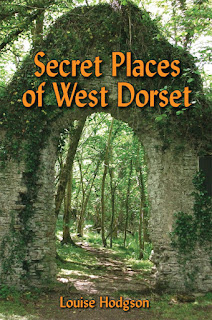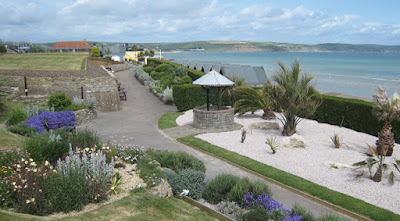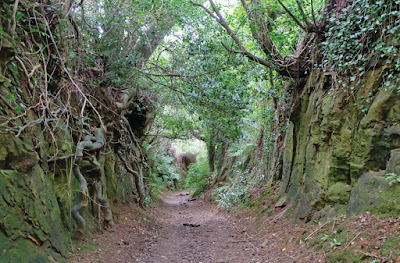Anyone who's been watching the
latest TV series of Broadchurch will be familiar with this picture below, Bridehead Lake, Littlebredy. It's the place of the crime scene.
This lovely spot in Dorset is featured in Louise Hodgson's Secret Places of West Dorset and below are extracts from the book – so hopefully you can visit in a more tranquil state of mind than our two Broadchurch detectives!
Be sure to also look in at the Littlebredy Walled Gardens, captured in Louise's companion book More Secret Places of West Dorset.
***
The family still lives in the manor
house, Bridehead. They effected a few changes, extending the house and
replacing the old medieval cottages with ones providing greater comfort. The
grounds surrounding the house were landscaped and the springs dammed to provide
a lake.
The lake is a focal point for the community, as large bodies of water
tend to be. The old marshy area of the springs has been transformed into the
clearest of waters. Fed by the unceasing flow, the lake empties as a waterfall
that forms the beginnings of the lovely River Bride. The water also supplies
the local manor and the village.
Bronze Age and later Celtic Iron Age people deposited placatory offerings
in lakes.
As lakes were seen as portals, these offerings were to the gods and ancestors,
particularly in times of strife, to try to effect supernatural aid.
… The archetypal image
of the Lady of the Lake, receiving in her pellucid hand Arthur’s famed sword
Excalibur, is linked with the idea of lakes as receptacles and revealers of the
Otherworld. … The reflected world is a different world, a captured one, a
doppelganger. Although the lake here is largely excavated, it works so
beautifully within its landscape that it seems perfectly natural and right.
The name ‘Bride’ for the river could come from the Celtic bridda meaning gushing. Bride is also the name of a widely worshipped Celtic goddess in pre-Christian
 Both this book and its companion More Secret Places are available from us direct (at reduced prices and with free delivery) and are on sale locally.
Both this book and its companion More Secret Places are available from us direct (at reduced prices and with free delivery) and are on sale locally. 















































